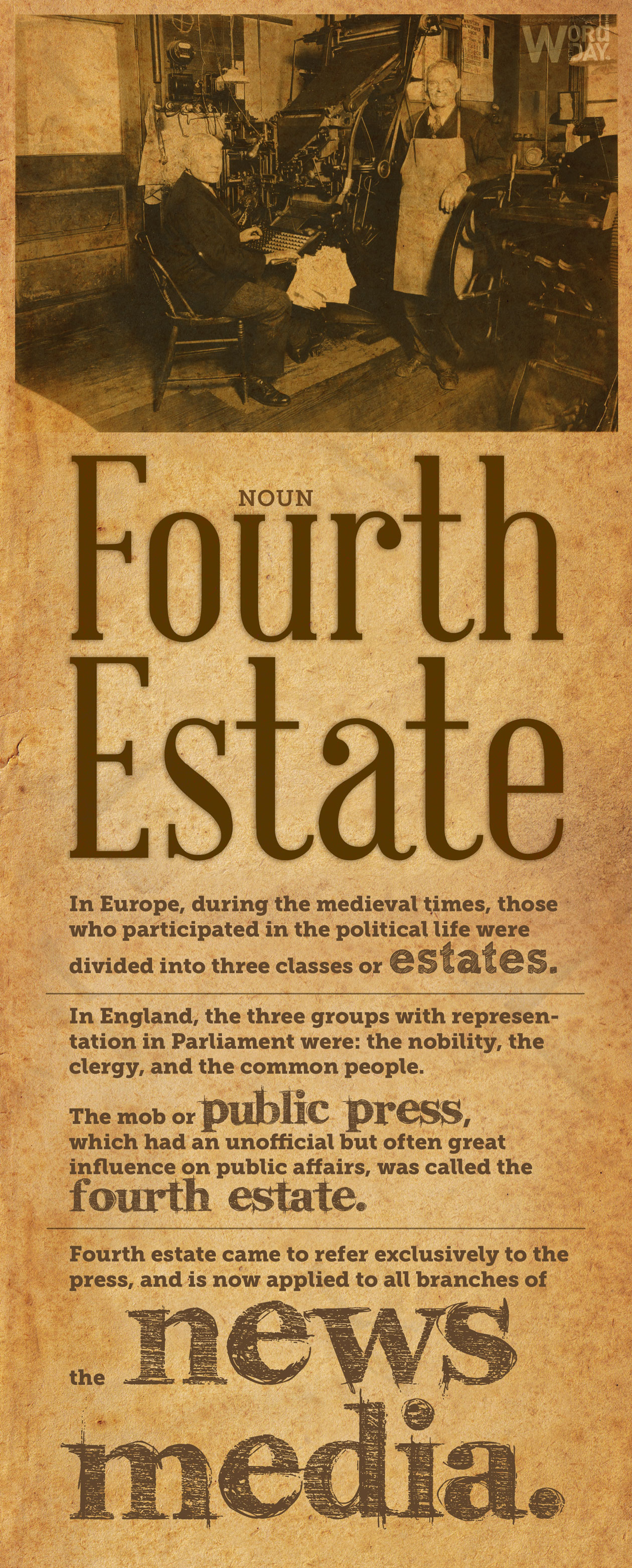
fourth estate \FORTH-ih-STAYT\ noun
: the public press
Usage:
“We should all be concerned,” the senator asserted, “about the plight of newspapers and the consequences of a weakened fourth estate on our democracy.”
“As someone firmly entrenched in the fourth estate, I am not too agreeable to most censoring, and would fight such impositions on the press or any other body, tooth and nail.” — From an article by Sunil Dang in The Day After, July 1, 2012
Origins:It might be news to you that the term “fourth estate” has been around for centuries. In Europe, going back to medieval times, the people who participated in the political life of a country were generally divided into three classes or “estates.” In England they were the three groups with representation in Parliament, namely, the nobility, the clergy, and the common people. Some other group, like the mob or the public press, that had an unofficial but often great influence on public affairs, was called the “fourth estate.” In the 19th century, “fourth estate” came to refer exclusively to the press, and now it’s applied to all branches of the news media.
Entry in Webster's Dictionary
Colors
Hex#: 523510
RGB: 82.53.16
CMYK: 47.67.94.56
Pantone: 476 C
Hex#: e6c688
RGB: 230.198.136
CMYK: 10.21.53.0
Pantone: 720 C
Hex#: d09048
RGB: 208.144.72
CMYK: 17.46.83.1
Pantone: 7510 C
Hex#: 3a220d
RGB: 58.34.13
CMYK: 52.70.82.71
Pantone: 4975 C

